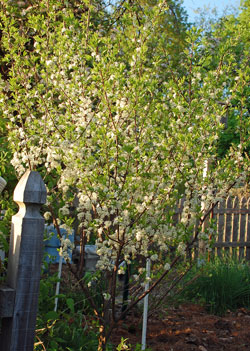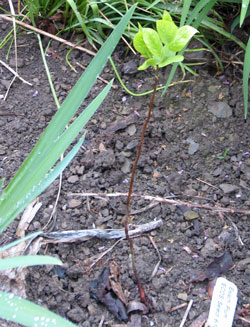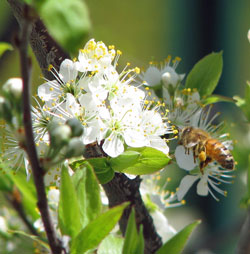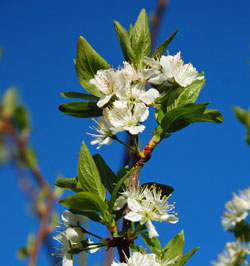Beach plums
 ©Janet AllenBeach plum
©Janet AllenBeach plum Years ago, we had planted conventional plum trees, but they took up too much space in our vegetable garden, even though they were dwarfs.
But now we're trying to grow as many native (at least native to the Northeast in general) food crops as possible, so we thought we'd give beach plum (Prunus maritima) a try. It's just a couple of years old so far.
 ©Janet Allen
©Janet Allen Beach plum seedling
We bought three plants from Oikos, each a different variety. One of them is the Maine Ecos cultivar (near the juniper in the back), one is the species (near the blueberries), and the one we planted out front is Ecos Select. We bought two of them as the cheapest little seedlings, and one of them as a larger 2-3 foot seedling. I wish we had bought them all as the largest seedlings since even then, it was less than $10. Although all three are growing, the smallest ones have been damaged or crowded out since they're so small.
As for most fruits, the first year or two we removed all the buds so the energy could go to the plant, not to producing plums. The third year, it flowered beautifully, but most of the small fruits dropped off.
 ©Janet Allen
©Janet Allen Beach plum being pollinated
I wonder if we planted them too far apart for pollination purposes. We planted in the only remaining spots available, but they're probably more than 50 feet apart.
 ©Janet Allen
©Janet Allen We've heard that beach plums don't produce well every year, but we're hoping this coming year will be a good one. We're looking forward to some beach plum jam.
Even without fruit, though, it's a very ornamental plant, and it's a good source of early season nectar for the bees, so all is not lost regardless.
